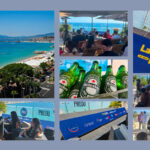By Ilhan Zengin, CEO, ShowHeroes Group
We live in unpredictable and dangerous times, with ongoing social and political upheaval on both sides of the Atlantic. We face a reality where unverified, potentially malign user-generated content on social platforms and walled gardens will not just persist: it will proliferate.
Following the election of Donald Trump as US President, big tech has noticeably been pulling back from fact-checking. Meta controversially dropped its third-party fact-checking for Facebook and Instagram, with users now largely responsible for policing misinformation on the platforms.
In addition to this, we have the proliferation of fake news and misinformation on social media from generative AI. There’s been a big increase, for example, of deep fake videos appearing on platforms like Facebook and YouTube, where influential politicians and celebrities sell fake investment opportunities and phony services.
The damage inflicted on a brand when its ads appear next to undesirable content like this is considerable. A 2023 study published in The Social Science Journal conducted various experiments to see how ads are impacted when they run beside fake content. The findings revealed that a false news story damaged the evaluation of both the associated ad, and its brand. Even in ‘non-negative fake news’, both ad and brand received significantly negative evaluations.
All of this adds deeper, darker layers of meaning to the question, “can I afford to advertise in the walled gardens?” It’s no longer about calculating if you can meet a physical price; it’s about deciding if you can afford to gamble with the precious credibility of your brand.
That’s why leaning more heavily into the open web ecosystem is now critical for advertisers. Within the open web, advertisers can partner with an array of trusted premium publishers, ensuring that their ads run next to quality editorial content that has been rigorously fact-checked. Brand safety and suitability are built into the open web by virtue of the experienced editorial teams that produce the content and the high standards that they operate under.
On the open web, advertisers can also leverage some of the most advanced brand safety and suitability tools in our industry, many of which are more robust and sophisticated than anything found within the walled gardens. Context-based semantic technology, for example, can ensure brand safety and suitability by only placing ads in the most relevant and brand-safe environments, within a carefully curated list of premium publishers. Brands have always demanded curation, whether through placements, keywords, targeting, or verticals, because where an ad appears matters just as much as the message itself.
By prioritising the open web, our industry will also encourage more ad dollars to flow to publishers and independent journalism—a cornerstone of credible information and societal progress, both of which are vital for the future of the web and the exchange of factual information. Unlike social platforms that prioritize engagement at any cost, independent publishers are incentivized to maintain credibility by creating an environment where brands can invest confidently, knowing their messaging will not be compromised by proximity to fraud, disinformation, or polarizing conspiracy theories.
In an increasingly unpredictable world, the amount of questionable and dangerous content within the walled gardens will only increase. The libertarian argument against social media curation and in favour of “free speech” has always been a dubious one. It creates a recipe for chaos within the platforms where anyone can say and share anything, regardless of the facts.
Advertisers must now ask themselves: can I continue to tolerate my client’s ads running next to unchecked content, alongside scams and frauds? Or appearing to support harmful conspiracy theories? Now is the time for brands to reclaim control. They can do so by shifting investment away from platforms that fuel fake news, and instead support an ecosystem where credibility, curation, and quality content define the digital advertising experience.








